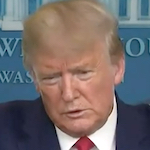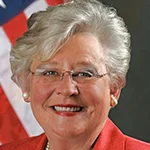 |
President Trump, who once said that any American who wanted to be tested for COVID-19 could do so, is singing a different tune these days.
The president unveiled his "ostrich's head in the sand" approach to COVID-19 during a June 15 White House discussion billed as "fighting for America's seniors."
After saying there are at least 15 different names for COVID-19, but only one certainty---it came from China—Trump suggested that perhaps the US should scale back testing because America's tests are more advanced than other countries.
The president said: "It’s so much bigger and better than any other country, that we’re going to have more cases. We’re always going to have more cases. And as I said this morning, that’s probably the downside of having good testing is you find a lot of cases that other countries, who don’t even test, don’t have. If you don’t test, you don’t have any cases. If we stopped testing right now, we’d have very few cases, if any."
Bingo! The president, who famously said that COVID-19 may just go away, now presents the miracle cure: no testing = no disease. That cure doesn't work very well for people who can't breathe because they are sickened by the virus and in need of hospitalization. Tough luck.
In the real world, the Washington Post reported June 13 that as the country reopens, 21 states reported an increase in the daily number of COVID cases from the earlier period. New infections nationwide also surged.
Anthony Fauci, director of the National Institute of Allergy and Infectious Diseases, doesn't see a return to normality for at least another year, and then expects COVID-19 "could go on for a couple of cycles, coming back and forth” in the U.S.
Meanwhile, it's been a month since the White House COVID-19 task force briefed the nation on developments.
One would expect task force chief Mike Pence would be eager to tell the nation why there is a spike in cases.
Is it due to more testing, or is it because Trump wanted to reopen the economy in a desperate bid to salvage his re-election?
If only, Pence wasn't such a lapdog.
The president is no fan of Section 230 of the Communications Decency Act, which shields Internet companies from liability for content posted on their sites.
After Twitter slapped a warning label on his incendiary "when the looting starts, the shooting starts" tweet last month, he signed an executive order designed to scale back Section 230.
The president is shooting himself in the foot with his effort to roll back Section 230
A Knight Foundation/Gallup poll released June 16 found overwhelming support (66 percent) for Section 230. Only thirty-one percent of respondents favor changing the law so people can sue companies for content that causes them harm.
Trump may have a narrow opening, as Americans do want to hold companies like Facebook, Twitter and Google responsible for what they publish.
A majority (54 percent) says Section 230 has done more harm than good because it fails to make companies accountable for content they have published online.
More than four-in-ten (44 percent) believe Section 230 has done more good than harm because it allowed the Internet to grow as a place where people can say what they think.
Americans say "no" to digital censorship as nearly two-thirds (65 percent) support allowing people to express their views on social media even if the opinions are considered offensive,
Thirty-five percent are in favor of restricting what people say, "based on societal norms or standards of what is fair or appropriate."
There are categories that should be banned or restricted on online content. Child pornography, at 95 percent tops the list, followed by misleading health information (85 percent), misleading info on elections/political issues (81 percent), false statements designed to smear a reputation (79 percent) and recording of a suicidal act (78 percent).


 Southern governors claim they know what's best for their working class, and it's not pay raises... A Ukrainian human rights group played a key role in convincing House Speaker Mike Johnson to hold a vote to send arms to Ukraine, Israel and Taiwan... Trump Media & Technology Group blames short-selling and not lousy outlook for its stock slump.
Southern governors claim they know what's best for their working class, and it's not pay raises... A Ukrainian human rights group played a key role in convincing House Speaker Mike Johnson to hold a vote to send arms to Ukraine, Israel and Taiwan... Trump Media & Technology Group blames short-selling and not lousy outlook for its stock slump. The techniques deployed by OJ Simpson's defense team in the 'trial of the century' served as a harbinger for those used by Donald Trump... People worry about the politicization of medical science just as much as they fret about another pandemic, according to Edelman Trust Barometer... Book bans aren't restricted to red states as deep blue Illinois, Connecticut and Maryland challenged at least 100 titles in 2023.
The techniques deployed by OJ Simpson's defense team in the 'trial of the century' served as a harbinger for those used by Donald Trump... People worry about the politicization of medical science just as much as they fret about another pandemic, according to Edelman Trust Barometer... Book bans aren't restricted to red states as deep blue Illinois, Connecticut and Maryland challenged at least 100 titles in 2023. The NBA, which promotes legalized gambling 24/7, seems more than hypocritical for banning player for placing bets... Diocese of Brooklyn promises to issue press release the next time one of its priests is charged with sexual abuse... Truth Social aspires to be one of Donald Trump's iconic American brands, just like Trump University or Trump Steaks or Trump Ice Cubes.
The NBA, which promotes legalized gambling 24/7, seems more than hypocritical for banning player for placing bets... Diocese of Brooklyn promises to issue press release the next time one of its priests is charged with sexual abuse... Truth Social aspires to be one of Donald Trump's iconic American brands, just like Trump University or Trump Steaks or Trump Ice Cubes. Publicis Groupe CEO Arthur Sadoun puts competition on notice... Macy's throws in the towel as it appoints two directors nominated by its unwanted suitor... The Profile in Wimpery Award goes to the Ford Presidential Foundation for stiffing American hero and former Wyoming Congresswoman Liz Cheney.
Publicis Groupe CEO Arthur Sadoun puts competition on notice... Macy's throws in the towel as it appoints two directors nominated by its unwanted suitor... The Profile in Wimpery Award goes to the Ford Presidential Foundation for stiffing American hero and former Wyoming Congresswoman Liz Cheney. JPMorgan Chase chief Jamie Dimon's "letter to shareholders" is a must-read for PR people and others interested in fixing America and living up to its potential... Get ready for the PPE shortage when the next pandemic hits... Nixing Netanyahu. Gaza carnage turns US opinion against Israel's prime minister.
JPMorgan Chase chief Jamie Dimon's "letter to shareholders" is a must-read for PR people and others interested in fixing America and living up to its potential... Get ready for the PPE shortage when the next pandemic hits... Nixing Netanyahu. Gaza carnage turns US opinion against Israel's prime minister.


 Have a comment? Send it to
Have a comment? Send it to 
No comments have been submitted for this story yet.